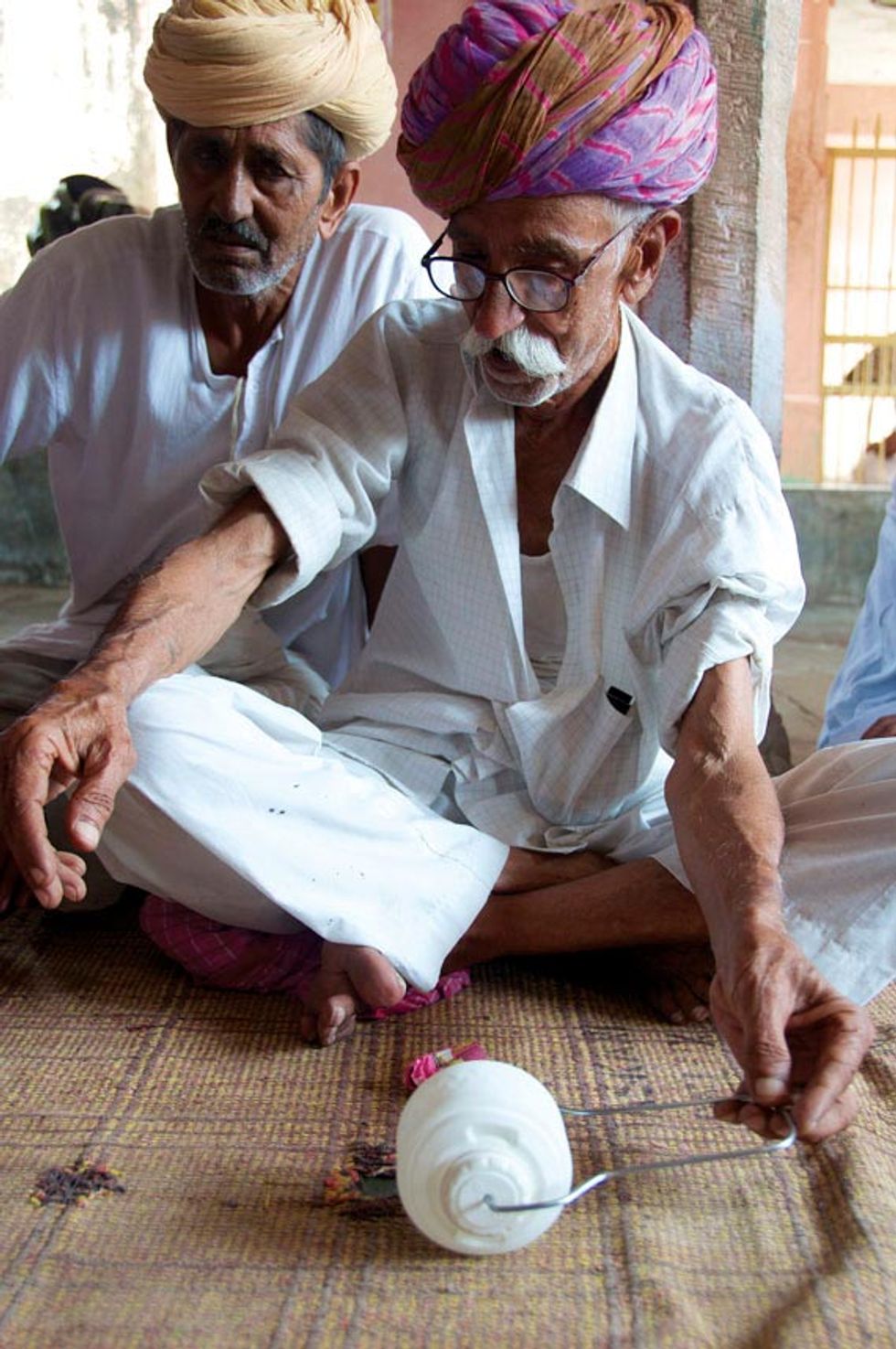On a crisp morning in Oakland, crowds of eager students climb inside a bright blue bus—festooned with drawings of neon eyes—to receive free eye exams and snazzy glasses. On the other side of the globe, Indian women roll plastic barrels, of streamlined design, filled with clean water along the ground, their vibrant saris fluttering as they walk.
While utterly different in focus and community, these pictures represent projects for social change made possible by San Francisco designers. They are just two of many examples in which local creatives are putting their talents to work with the goal of making a difference in people’s lives—and bringing together places that are otherwise worlds apart.
“It’s about making design that has meaning, instead of just making a pretty thing,” says Alice Bybee, former president of the American Institute of Graphic Arts’ (AIGA) San Francisco chapter. Bybee also cofounded AIGA’s Social Impact group. The program’s biennial international design competition, called “cause/affect,” is aimed at galvanizing like-minded designers to create change with their work. “This kind of design has evolved to be about making an impact in the community,” she says, “being socially responsible, and encouraging people to think with a broader vision.”
Though design for the greater good is nothing new, the idea has been marginalized in much the same way as environmentalism— it wasn’t so long ago that eco-consciousness was thought of as just ugly hay-bale houses and hemp-covered goods. That’s quickly changing. “There’s been a real groundswell,” says John Cary, the founding editor of the blog Public Interest Design and guest curator of an exhibition called “Public Interest Design: Products, Places, and Processes,” currently on display at the Autodesk Gallery at One Market. “Design for social change is bubbling up and reaching a tipping point in the same way that environmental emphasis did within the design field.” Books such as Design Like You Give a Damn by SF-based nonprofit Architecture for Humanity, major exhibitions at the Cooper-Hewitt and MOMA, and the 2012 Clinton Global Initiative centered on design are helping bring the discussion front and center.
Many see San Francisco as a nexus for this work. Architecture for Humanity, with its global field offices offering architectural services to underserved communities, has worked to rebuild post-Katrina Haiti and Japan in the aftermath of the 2011 tsunami. But SF is the organization’s HQ. “Whether it’s in the tech world or the design world, San Francisco is at the forefront of this innovation movement,” says Frederika Zipp, operations director for the nonprofit. “There’s an energy and creativity of people who come from all over the world to participate in this.” It is certain entrepreneurial characteristics—we are risk takers with little fear of failure—which thrive locally, that drive social-impact design.
This heady homegrown mix of invention, internationalism, and experimentation is exemplified in many local design firms. Ideo.org, a nonprofit spinoff of its parent company, global design consultancy Ideo, has developed an approach they call human-centered design. Patrice Martin, creative director of Ideo.org, explains: “It’s about the need to deeply understand the people we’re designing for and also to prototype, to build things, and to put them in front of people and get reactions.” Like all the other creative firms mentioned in this story, Ideo.org sends its designers—often multinationals who speak the local language—to the communities they seek to help. For days, weeks, or sometimes months, these designers visit local homes and see how the people live. Only then do they begin to formulate a design solution based on their ground-level research. So whether it is creating new medical devices, banking techniques, or access to clean sanitation, the approach is to really listen to what communities need rather than telling them what they should want.
But as with any revolutionary movement, challenges abound. Since social-impact design is relatively new, proponents don’t have footsteps to follow and instead must forge their own way. “For me, opportunities arose but there was no clear path,” says Liz Ogbu, a designer and social-innovation strategist. Currently scholar-in-residence at California College of the Arts, Ogbu notes that school curricula and traditional design firms still haven’t fully integrated social design: “Either people like me have to teach and share the insights we’re learning in the field or it’s a trial by fire when people get out there.”
Funding is also an issue, especially for young designers entering the field. Nonprofits including Architecture for Humanity, Ideo.org, and Code for America offer fellowships. And the Enterprise Rose Scholarship gives money to architects pursuing public-interest design. Yet demand far outstrips resources: Last year, for example, more than 500 applicants clamored for one of Ideo.org’s four fellowships.
As the importance of social-impact design gains recognition, however, more jobs, scholarships, and other opportunities will inevitably arise within the field of altruistic design. “We want to show why design should be part of problem-solving and focus on the evidence of its value,” says Martin. “We’re pushing the way we apply design, and we’re excited to see what happens next.”
This article was published in 7x7's December/January issue. Click here to subscribe.





















